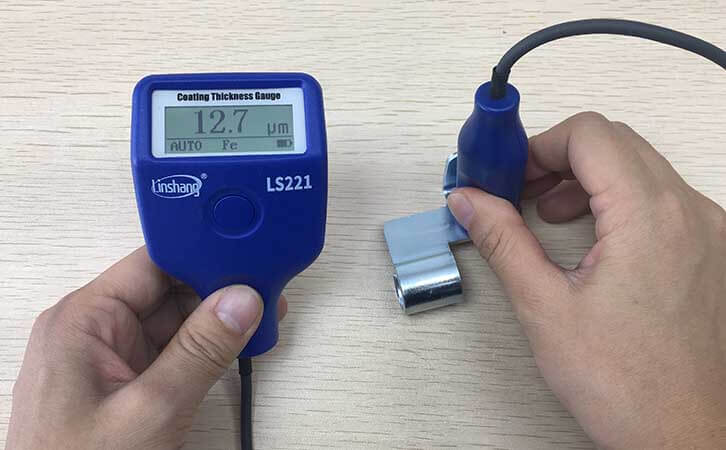Paint Thickness Tester, a Good Helper to Ensure Product Quality
The paint thickness tester is widely used in modern machinery processing industry. Clever operation of the paint thickness tester in product inspection can improve work efficiency and product quality. At present, the mainstream paint thickness testers on the market mainly use the principle of magnetic induction or eddy current measurement to measure the thickness of non-magnetic coatings on magnetically permeable materials.
It is undeniable that on the one hand, after technological innovation and progress, the LS221 paint thickness tester is more convenient and quick to use. It has small measurement errors and high reliability. However, on the other hand, because the operator lacks the knowledge of daily normative use and use the instrument improperly. The data measured several times in the same place is different, the deviation is large and the work efficiency is low. In response to this problem, this article lists typical situations in depth, hoping to help and inspire the practitioners of the workshop quality inspection system.
1. Pay attention to the choice of magnetic metal matrix. In detail, it should be implemented in two aspects. On the one hand, the metal magnetic properties and surface roughness of the standard film are similar to those of the test piece; on the other hand, do not be lower than the thickness limit of the base metal, that is, each instrument has a certain manimum critical thickness when measuring. Once the critical value is less, the measurement result will inaccurate.
2. Eliminate edge effects, curvature and magnetic interference. Regarding edge effects, it can be said that the general measurement results are not reliable. Because the surface roughness and surface shape of the test piece are in the limit state at the edge, it is not enough to represent the overall average situation of the measurement object. With regard to curvature, for inherent properties, it changes with the radius of curvature. In other words, the measurement result of the test piece with large curvature is not reliable. For easily deformed test pieces, the measurement results should not be selected as reference values. Regarding the effects of magnetic fields. During the measurement, the coating measurement using the magnetic induction principle will cause the magnetic field environment generated by the nearby electrical equipment to change, so the paint thickness tester needs to avoid the surrounding strong magnetic field interference during the working process.
Through the introduction, we can conclude that the cause of the large measurement error of the paint thickness tester is mainly due to the selection of the metal substrate and the measurement method. Therefore, it should be considered and studied carefully in the measurement to eliminate interference to the greatest extent.
The paint thickness tester is widely used in the coating industry, manufacturing industry, metal processing industry, chemical industry and other fields. The correct use method allows us to understand the product situation efficiently and clearly, and guide us to further compliance and high-quality production.
- High precision coating thickness gauge for used car
- Automotive paint protection films coating thickness gauge
- Plating Thickness Measuring Instrument for Detecting Anti-corrosion Coating
- Linshang LS220, LS191, LS160A– Necessary for Car Cover Inspection
- Coating Thickness Gauge for Second Hand Vehicle
- Zero Adjustment Step of Coating Thickness Gauge
